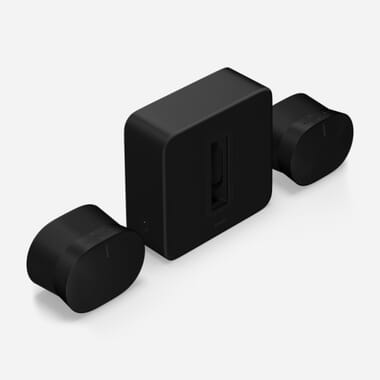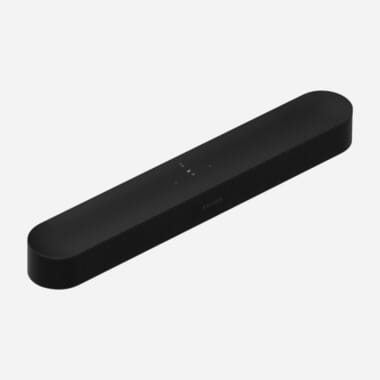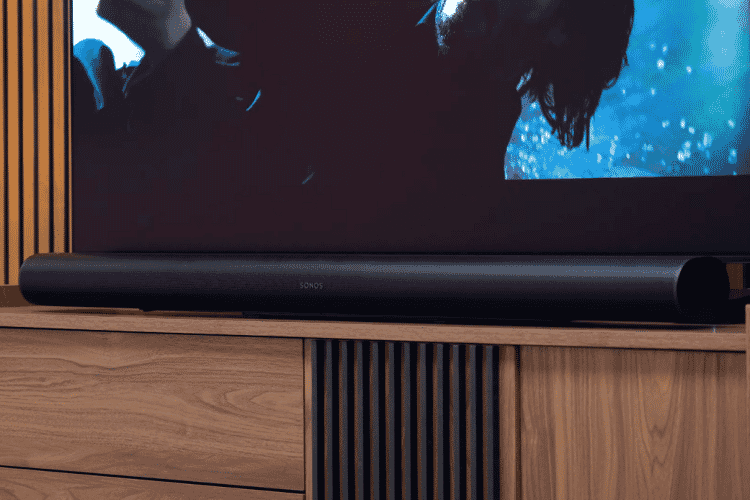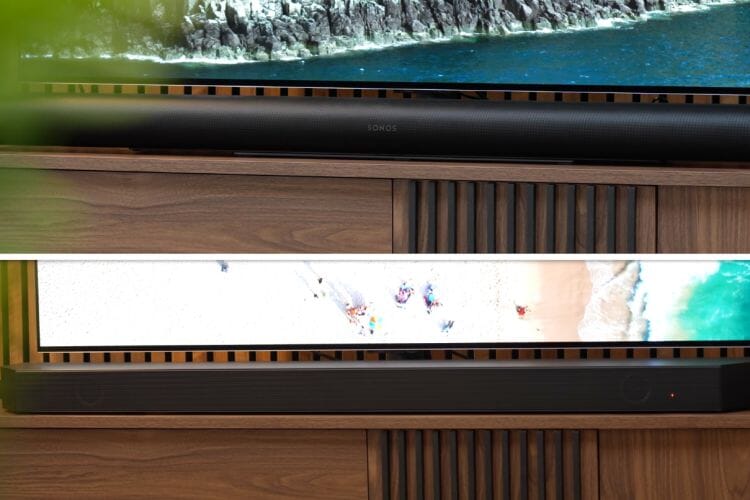We Tested Sonos Arc Ultra’s New Speech Enhancement Feature – Here’s What We Found!
Most of us have been there. You’re watching a film; the music swells, the action kicks off, and suddenly you can’t hear a word anyone’s saying. You turn on subtitles, bump the volume, or rewind for the fifth time. It’s not you. Dialogue clarity is a growing problem in modern audio mixing.
Thankfully, as of May 13th, 2025, Sonos has rolled out a major update for the Arc Ultra, introducing an AI-powered speech enhancement feature that makes dialogue clearer than ever without compromising the cinematic sound experience.
Built in partnership with the Royal National Institute for the Deaf (RNID), this new feature has been in development for four years and is designed to dramatically improve how you hear vocals and dialogue through your Sonos soundbar. We’ve tested it ourselves and here’s what it actually sounds like.
Why Buy From Smart Home Sounds? We offer a FREE 6-year extended warranty on all Sonos products, 30-day extended returns, and free next-day delivery*. Looking for more personal advice? Contact our team of experts today.
Sonos Arc Ultra Speech Enhancement: What’s New?

Before we dive into how the speech enhancement feature sounds in the real world, let’s cover the essentials. What do you need to know about this update at a glance?
1. It's Exclusive to Sonos Arc Ultra
First thing’s first, this isn’t a system-wide update. Sonos’ new Speech Enhancement feature is only available on the flagship Arc Ultra. That’s because it’s the only soundbar in their current range with the processing power needed to support the AI technology behind it (more on that shortly).
So, if you’re currently using a Sonos Beam or Ray, this feature won’t appear in your app, which might make upgrading worth considering. After all, even the best setups deserve a glow-up. If you're interested, get in touch - we’ll be happy to help with some friendly advice!
Read More: Sonos Arc Ultra vs Sonos Beam (Gen 2) & Sub Mini: Which Setup is Right for You?
2. There Are Four Speech Modes to Choose From
Rather than offering a simple on/off toggle like the old Speech Enhancement setting, this update introduces four distinct levels of control: Low, Medium, High, and Max.
Off – This is the default state with no speech enhancement applied. Dialogue will sound as it was originally mixed, with no additional AI processing.
Low - A subtle bump that makes voices a little more present in the mix, perfect for everyday viewing.
Medium – A clearer improvement, roughly equivalent to the previous version of Speech Enhancement.
High - Starts to shift the mix more noticeably, pushing dialogue to the forefront.
Max - Designed primarily for those with hearing difficulties, giving maximum clarity even if it means some background detail gets dialed back.
Each mode is selectable via the Sonos app, so you can fine-tune the experience to suit your preferences, your space, or even the content you’re watching.
3. It’s Powered by AI: How Does It Work?
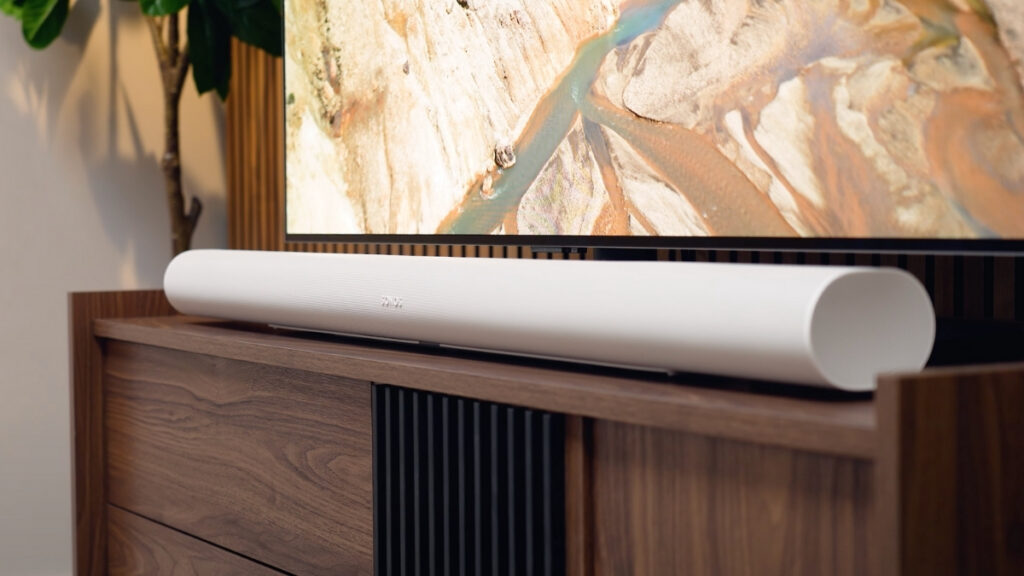
The real star of the show here is how Sonos has harnessed AI in a genuinely useful way. This is a first-of-its-kind software update, and at its core is a machine learning model trained to analyse your audio in real-time.
Using a technique known as “audio source separation”, this gives your soundbar the ability to identify and isolate the specific speech and vocal elements from the rest of the audio, then bring them forward in the mix without dulling everything else around them.
That’s a big deal, because with the traditional speech enhancement feature, there used to be a bit of a trade-off. Boosting voices often came at the expense of other elements like bass, surround effects, or just overall dynamic range, so while speech sounded better, the rest of the experience took a hit as a result.
Sonos’ new approach avoids that. Because the AI isolates speech as its own element, the system can enhance it directly, rather than messing with the frequencies that make up the rest of your soundstage. So your Dolby Atmos height effects stay immersive, the bass still rumbles, and everything else remains as impactful as it should.
That’s the quick version. If you’re keen to get into the nuts and bolts, Sonos have put together a proper deep dive here, straight from the team who built it.
4. Developed In Collaboration with the Royal National Institute for Deaf People (RNID)
What really sets this feature apart is how long it’s been in the making. Sonos has been developing this update for four years, with the final year spent working closely with the Royal National Institute for Deaf People (RNID). They brought in a mix of participants of different ages and hearing abilities to help shape how the modes actually behave in the real world.
Does that mean this feature is just about accessibility? In part, and that’s a big win. But it’s not only about making content more accessible for specific groups. It’s about giving everyone more control over how they listen.
Whether you want a little extra clarity in dialogue-heavy scenes or just prefer voices to sit more forward in the mix, this feature makes that possible. It’s thoughtful, flexible and ultimately makes the listening experience better for everyone.
Our Hands-On Testing: How Does It Actually Sound?
We’ve spent a bit of time with the new Speech Enhancement modes, testing it out in our very own Sonos Home Cinema, and if you're wondering which setting sounds best, here’s our take.

Low gives the dialogue just enough lift to make voices feel clearer and more present in the room. It doesn’t mess with the rest of the mix, which is great, and everything still sounds natural, cinematic, and full of detail. This would be our preferred level for viewing.
Medium steps things up slightly and feels similar to the level of impact of the original Speech Enhancement mode but with better handling of the rest of the mix.
High and Max, on the other hand, feel a bit more specialised. High really makes vocals pop, but for general listening, it might be a little too much. Max goes even further and does start to take the edge off the rest of the mix, so while the dialogue is crystal clear, you’re trading off a bit of the immersion.
Lui, our Tech Guide, put it best during testing:
🗣: "Low gives you that extra clarity without you really noticing it’s doing anything, which is kind of perfect. Medium feels like a nice middle ground, but it’s great that High and Max are there if someone genuinely needs it."
For most people, we think Low and Medium are where you’ll spend most of your time, depending on what you’re watching. Both give a noticeable boost to clarity without changing the overall feel of the sound, which is a real positive. That said, modes like High and Max will be incredibly useful for people suffering with hearing loss or anyone who struggles with speech clarity so they’re a great addition too.
It’s also worth noting that Speech Enhancement is intended for use with TV, films and podcasts (anything where dialogue is key). It’s not designed for music or gaming, where the processing might interfere with the balance of sound effects or the overall audio mix. if you're going to be using this speech enhancement we recommend sticking to content where voices lead, and you’ll get the best results.
Our Final Verdict:
For us, it’s just great to see Sonos giving people more control. Rather than a one-size-fits-all solution, this lets you adjust your setup to suit your listening preferences, your room, and your content. It’s more accessible, more thoughtful, and a genuine improvement to how people experience content.
Sure, we’d love to see this rolled out across the rest of the Sonos soundbar range, but for now, that doesn’t look likely. That’s a bit of a shame, especially for Beam and Ray owners, but overall this feels like a real step in the right direction and something that bodes well for whatever Sonos has planned next!
Other Useful Content
Blog: The Best Sonos Speakers to Buy in 2025
Blog: Sonos Arc Ultra Review: The Dolby Atmos Soundbar To Beat?
Blog: 6 Quick Tips to Enhance Your Sonos Surround Sound System
Blog: Best Dolby Atmos Soundbars 2025: The Complete Buyer's Guide
For more information about Sonos or any other products, get in touch and one of our Tech Guides would be happy to help!
| info@smarthomesounds.co.uk | |
| Live Chat on our Website | |
| 0800 677 1100 |
Why buy from Smart Home Sounds? We offer Lowest Price Guarantee, Free Next Day Delivery* and 0% Finance Available. Looking for more personal advice? Contact our team of experts today. Shop Sonos




